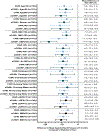Home-Based Care for Hypertension in Rural South Africa
- PMID: 40888742
- PMCID: PMC12412915
- DOI: 10.1056/NEJMoa2509958
Home-Based Care for Hypertension in Rural South Africa
Abstract
Background: Poorly controlled hypertension is a common problem worldwide, particularly in low-resource settings.
Methods: We conducted an open-label, randomized, controlled trial of a home-based model of hypertension care in South Africa. Adults with hypertension were assigned to receive home-based care, which consisted of patient monitoring of blood pressure, home visits from a community health worker (CHW) for data collection and medication delivery, and remote nurse-led decision making supported by a mobile application (CHW group); enhanced home-based care, which consisted of the same intervention but with blood-pressure machines transmitting readings automatically (enhanced CHW group); or standard care with clinic-based management (standard-care group). The primary outcome was the systolic blood pressure at 6 months. Secondary outcomes were the systolic blood pressure at 12 months and hypertension control at 6 and 12 months. Safety outcomes included adverse events, deaths, and retention in care.
Results: A total of 774 adults underwent randomization. The mean age was 62 years; 76.0% of the participants were women, 13.6% had diabetes mellitus, and 46.5% had human immunodeficiency virus infection. The mean systolic blood pressure at 6 months was lower in the CHW group than in the standard-care group (difference, -7.9 mm Hg; 95% confidence interval [CI], -10.5 to -5.3; P<0.001) and was also lower in the enhanced CHW group than in the standard-care group (difference, -9.1 mm Hg; 95% CI, -11.7 to -6.4; P<0.001). The percentage of participants with hypertension control at 6 months was 32.5% in the standard-care group, as compared with 57.4% in the CHW group (relative risk, 1.76; 95% CI, 1.40 to 2.13) and 61.3% in the enhanced CHW group (relative risk, 1.89; 95% CI, 1.51 to 2.27). The improvements in systolic blood pressure and hypertension control with home-based care appeared to persist at 12 months. Severe adverse events and deaths occurred in 2.7% and 1.0% of the participants, respectively, and occurred in a similar percentage of participants across trial groups. Retention in care was observed in more than 95% of the participants in the CHW and enhanced CHW groups.
Conclusions: In South Africa, home-based hypertension care led to a significantly lower mean systolic blood pressure at 6 months than standard, clinic-based care. (Supported by the National Institutes of Health and others; IMPACT-BP ClinicalTrials.gov number, NCT05492955; South African National Clinical Trials Register number, DOH-27-112022-4895.).
Copyright © 2025 Massachusetts Medical Society.
Figures


References
-
- Brauer M, Roth GA, Aravkin AY, et al. Global burden and strength of evidence for 88 risk factors in 204 countries and 811 subnational locations, 1990–2021: a systematic analysis for the Global Burden of Disease Study 2021. The Lancet 2024;403(10440):2162–203.
-
- Global report on hypertension: the race against a silent killer [Internet]. [cited 2025 Jul 3];Available from: https://www.who.int/publications/i/item/9789240081062
Publication types
MeSH terms
Substances
Associated data
Grants and funding
LinkOut - more resources
Full Text Sources
Medical
